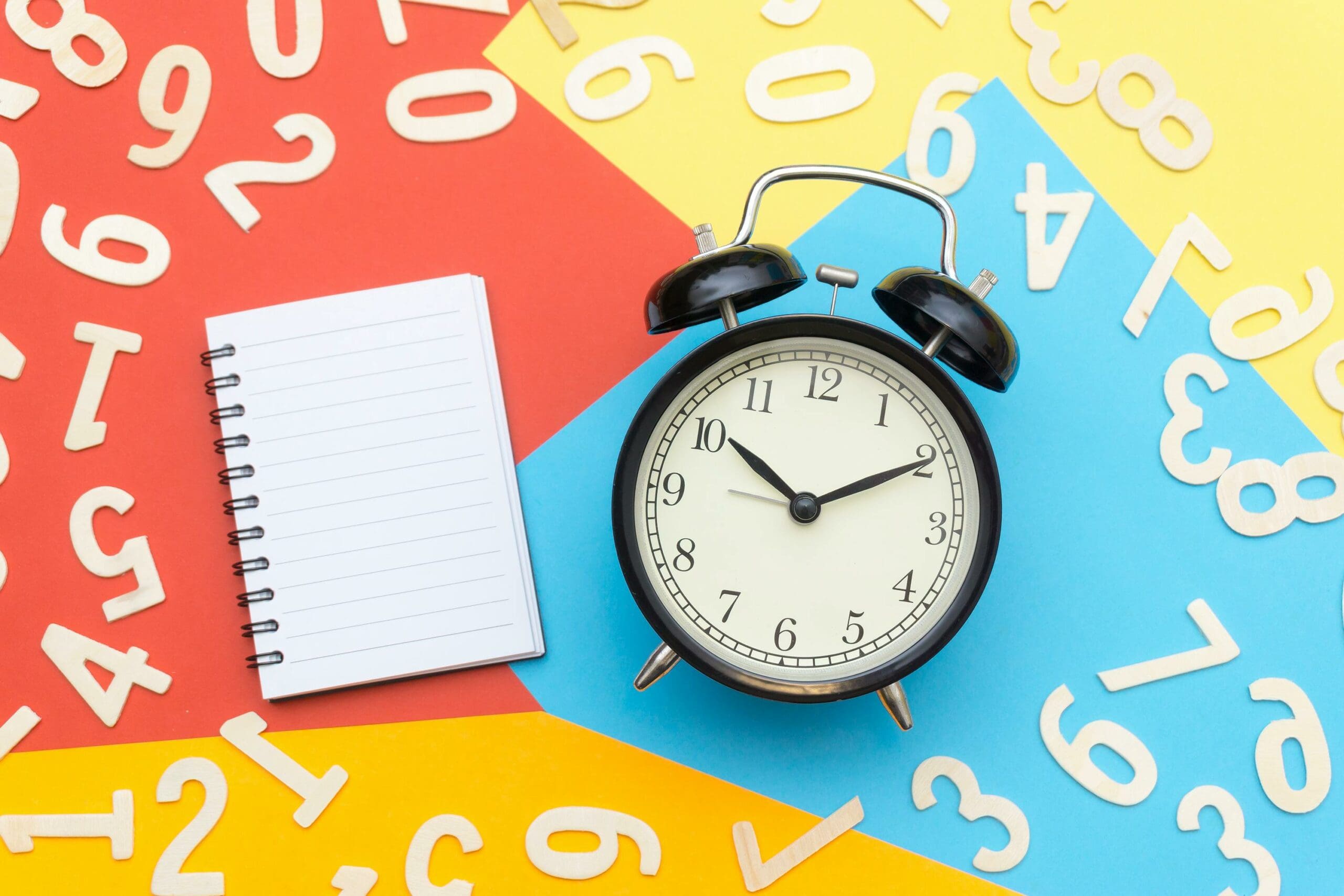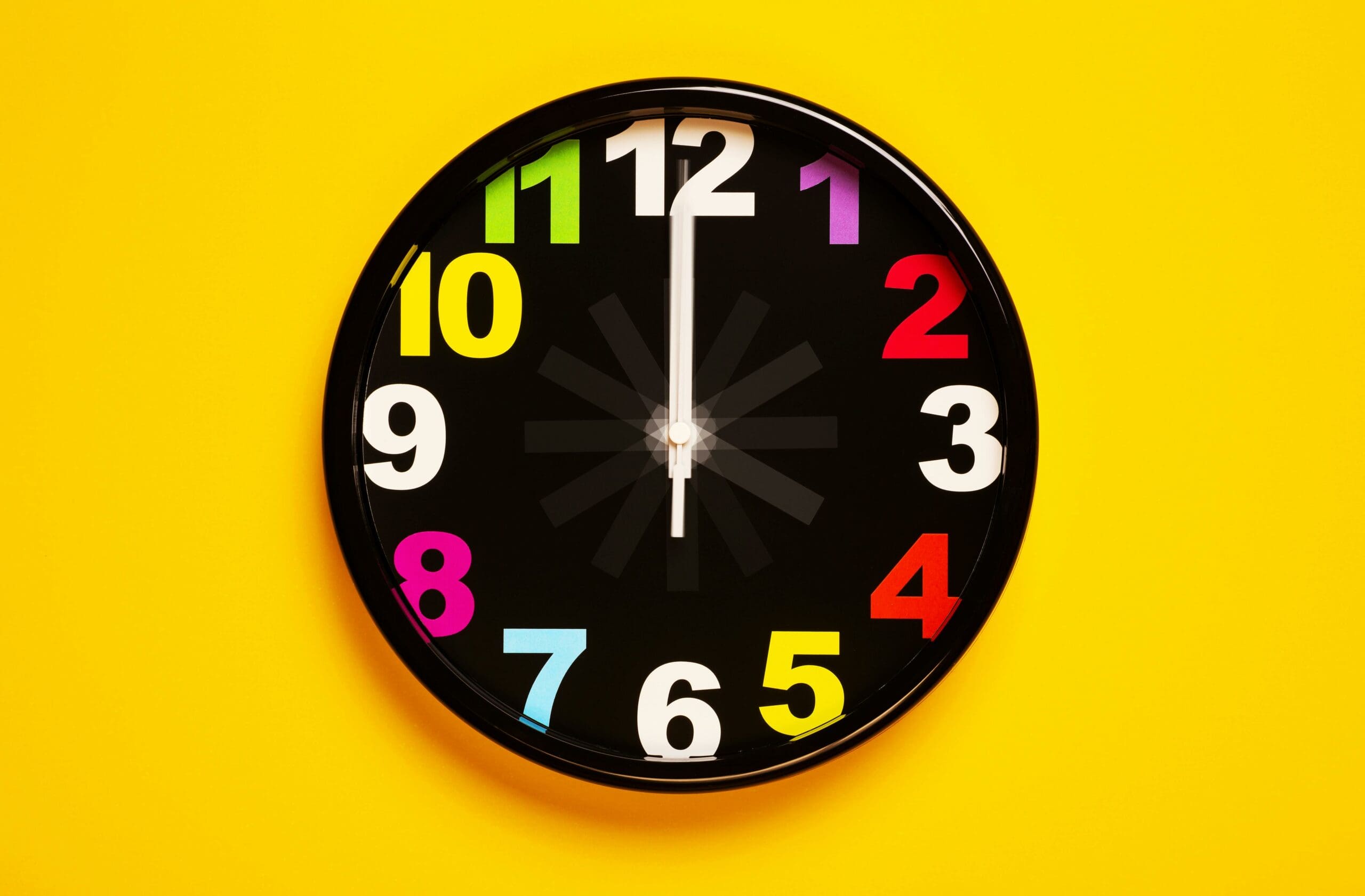
Maths on the Clock: Mastering The Exciting Time Calculation Skills for Everyday Life
Table of Contents
Time is a fundamental concept that orchestrates our day-to-day activities, and yet, for many, understanding and calculating it can be quite challenging. We often take for granted the ability to check the time on our smartphones or digital clocks, but the maths involved in timekeeping is an essential skill not to be overlooked. Calculating minutes and hours on a clock requires a grasp of time formats, an understanding of how to read both digital and analogue displays, and the capability to compute elapsed time, all of which are vital for managing one’s schedule effectively.

In schools and everyday life, these skills are cultivated for a variety of practical applications, such as event planning, travel, and even in professional settings. We tackle concepts like adding and subtracting time, converting between different units of time, and navigating through time zones, which can all seem daunting at first. Mastering these aspects enables us not only to tell the time but also to plan and organise with a degree of sophistication that is demanded by our modern lives.
Key Takeaways
- Grasping time formats and clock reading is essential for time management.
- Calculation skills enable efficient planning and organisation.
- Time maths applications range from everyday activities to professional settings.
Understanding Time Formats

When we think about time, we’re considering the two most common ways to read it: the 12-hour format and the 24-hour format. Each method has its own context of use and learning to convert between them is a handy skill.
12-Hour Clock
The 12-hour clock is what many of us are familiar with in our daily lives. It divides the 24 hours of a day into two periods – AM (ante meridiem, before midday) and PM (post meridiem, after midday). Each period consists of 12 hours numbered from 1 to 12. A clock will often have ‘AM’ or ‘PM’ to clarify the time of day, such as 09:00 AM for nine in the morning or 10:00 PM for ten at night. When reading a clock face, the position of the hour and minute hands tells us the time within these two 12-hour portions of the day.
24-Hour Clock
Alternatively, the 24-hour clock, also known as military time in some contexts, expresses time as a number from 00 to 23. This format is particularly useful for avoiding confusion between AM and PM times. For instance, 1 PM is 13:00 hours, and midnight is 00:00 hours. It’s commonly used in timetables, military, and emergency services because of its clarity. When using a time converter to translate from a 12-hour to a 24-hour format, simply add 12 to the PM times. For example, 03:45 PM would be 15:45 in a 24-hour representation.
Tools for Time Conversion
When we look at time conversion, it’s essential to have the right tools at our fingertips. Whether we’re translating decimal hours to a more traditional format or working out differences between time zones, having accurate tools and resources makes all the difference.
Time Conversion Calculators
Our first port of call for time conversion is often a time conversion calculator. These calculators are invaluable for swiftly converting time into decimal hours, or vice versa. If we need to know how many minutes are in 1.5 hours, for example, these calculators provide a quick and precise answer. They’re especially useful for professionals who track time for billing or for students who are learning about the concept of time in a mathematical context.
Time Worksheets
We also find that time worksheets can be a fantastic learning tool, particularly for younger learners. Worksheets provide practical problems that require students to calculate the passage of time, from minutes to hours or figuring out what the clock will read in a certain number of hours. Using resources like LearningMole’s engaging and educational worksheets, we can help students to embed these concepts through repetition and practice.
Reading Analog Clocks
Analog clocks remain a central part of learning about time for students as they offer a tactile and visual way to understand the passing of hours and minutes. Let’s take a closer look at how to interpret these traditional timekeepers.
Interpreting Hours
On an analog clock, the shorter hand points to the hour. As it moves from one number to the next, it’s indicating the progression through a sixty-minute period. For instance, if the hour hand is halfway between the 2 and the 3, that indicates that half an hour, or thirty minutes, has passed since 2 o’clock.
Interpreting Minutes
The longer hand on the clock shows minutes, with each number on the clock representing a five-minute increment. To read the minutes accurately, count by fives from the 12, followed by the additional minutes up to the minute hand. For example, if the minute hand is on the 9, that signifies forty-five minutes past the hour.
Calculating Elapsed Time
In learning to calculate elapsed time, our focus is on developing a solid understanding and applying that knowledge through practice. Let’s explore how to master the concept of elapsed time and how we can use worksheets to effectively reinforce this skill.
Understanding Elapsed Time
Calculating elapsed time involves determining the amount of time that has passed from a starting point to an ending point. It’s an essential skill in everyday life, from figuring out how long a meeting lasted to knowing when to take something out of the oven. We often deal with elapsed time when looking at schedules or planning events.
For instance, if you begin watching a film at 4:30 pm and it ends at 6:10 pm, the elapsed time is the difference between these two points. To calculate, we’d consider the hours and minutes separately:
- Hours: From 4:30 to 5:30 is one hour, and from 5:30 to 6:10 is not quite another hour.
- Minutes: From 4:30 to 5:00 is 30 minutes, and from 5:00 to 6:10 is another 70 minutes.
Adding it all up, we have one hour and 100 minutes, which simplifies to two hours and 40 minutes of elapsed time.
Elapsed Time Worksheets
Worksheets are a fantastic way for individuals to practice calculating elapsed time. By presenting a variety of scenarios where you need to work out how much time has passed, elapsed time worksheets help in consolidating the understanding of the concept. These worksheets can range from simple exercises, where you might calculate the duration of a lunch break, to more complex problems that require adding and subtracting hours and minutes.
Here’s an example of what you might find on a worksheet:
- Start Time: 3:15 pm
- End Time: 5:45 pm
- Elapsed Time: (Calculate the number of hours and minutes.)
When using such worksheets, it’s helpful to use a step-by-step approach:
- Calculate the hours separately.
- Calculate the leftover minutes.
- Combine hours and minutes for total elapsed time.
These worksheets also often come with word problems that incorporate real-life situations, enhancing the relevance and applicability of the mathematical concept. Through consistent practice, we can grow more adept at solving these problems swiftly and accurately.
Adding and Subtracting Time
We can handle time calculations with ease, whether adding them up for a total duration or figuring out the difference between two moments.
Adding Times
When we add time, we simply combine the hours and minutes separately. Let’s look at an example:
| Time 1 | Time 2 | Total Time |
|---|---|---|
| 3h 45m | 2h 30m | 6h 15m |
First, add the minutes: 45m + 30m = 75m. Since 60 minutes make an hour, we convert 75 minutes to 1h 15m. Now, add the hours: 3h + 2h + 1h (from the 75 minutes) = 6h. Combine them, and we have 6h 15m.
Subtracting Times
Subtracting times follows a similar method but in reverse. If the minutes of the second time are larger, we need to borrow an hour from the first time.
| Start Time | End Time | Time Difference |
|---|---|---|
| 9h 30m | 5h 40m | 3h 50m |
Subtract the hours directly: 9h – 5h = 4h. Since we can’t subtract 40m from 30m, we need to borrow an hour, turning 4h into 3h, and adding 60m to 30m, giving us 90m. Now, 90m – 40m = 50m. The difference is 3h 50m. Always ensure the result represents a positive passage of time, as negative time isn’t a conventional concept in our daily schedules.
Maths with Calendars
When we explore the fascinating world of calendars, we’re really delving into a mathematical treasure trove. Here’s how we can convert days and weeks into hours.
Days to Hours
To convert days to hours, simply multiply the number of days by 24, since a day is comprised of 24 hours. For example:
- 1 day = 24 hours
- 7 days (1 week) = 7 x 24 = 168 hours
This is useful for planning and estimating the time you have for various activities and appointments.
Weeks to Hours
When looking at weeks, we must remember that a standard week contains 7 days. To calculate the number of hours in any given number of weeks:
- Multiply the number of weeks by 7 (to find the days)
- Then multiply this number by 24 (to convert these days to hours)
For instance:
- 1 week = 7 days = 7 x 24 = 168 hours
- 4 weeks = 28 days = 28 x 24 = 672 hours
These simple mathematical conversions are essential for long-term planning and time management within a calendar framework.
Conversions Between Time Units
Understanding how to convert between different time units is an essential skill in both everyday life and mathematical problem-solving. We use certain conversion calculators and techniques to help us efficiently change minutes to hours or hours to days.
Minutes to Hours
To convert minutes to hours, we divide the number of minutes by 60 because there are 60 minutes in an hour. If we have a figure that doesn’t divide evenly, the remainder is the number of minutes left over. For instance:
- 150 minutes ÷ 60 = 2 hours and 30 minutes
Hours to Days
To turn hours to days, we take the total number of hours and divide by 24, as one day is made up of 24 hours. Like minutes to hours, any hours that don’t evenly convert into full days remain as hours. Here’s how it works:
- 48 hours ÷ 24 = 2 days
In both cases, using a reliable conversion calculator can simplify the process and ensure accuracy, especially when dealing with larger numbers or needing to convert between multiple time units at once.
Using a Time Calculator
When we tackle time-related maths problems, using a time calculator can be tremendously helpful. It automates the computations, allowing for quick and precise results.
Functions of a Time Calculator
A time calculator is an effective tool that performs various time-related calculations. Essentially, it can add or subtract time in the form of hours and minutes, which is quite beneficial for time management or planning. Additionally, it can convert hours and minutes to decimal hours, simplifying payroll calculations and other time-based accounting practices. More advanced functions include calculating the difference between two times, which is incredibly useful for determining the duration of events or activities.
Practical Examples
To understand the application of a time calculator, consider the following example. If we start a task at 9:15 AM and complete it at 11:45 AM, a time calculator can swiftly tell us that the total time spent is 2 hours and 30 minutes. Moreover, if we’re planning an event that needs to start at 3:30 PM and we have 4 hours of work to do beforehand, the calculator can work backwards to tell us to start at 11:30 AM. For hourly workers, if someone works for 7 hours and 15 minutes, the calculator converts this into a decimal figure of 7.25 hours, which can then be multiplied by the hourly rate to calculate earnings.
Understanding Time Zones
In this section, we explore how to navigate the complex system of time zones. We’ll show you what you need to know about converting time and collaborating with colleagues or friends scattered around the globe.
Time Zone Conversion
When managing time across different regions, understanding how to convert standard time to local time and vice versa is crucial. Remember that not all time zones follow whole-hour offsets from Coordinated Universal Time (UTC); some may differ by 30 or 45 minutes.
Steps to Convert Time:
- Identify the current local time and its corresponding UTC offset.
- Determine the UTC offset of the destination time zone.
- Calculate the difference between the two offsets.
- Adjust the local time by this difference.
Example: If it’s 3:00 PM in London (UTC+0) and you wish to know the time in New Delhi (UTC+5:30), we add 5 hours and 30 minutes to get 8:30 PM.
For accuracy in time conversion across various time zones, refer to related studies such as the impact of distance and time zones on services trade.
Working Across Time Zones
Coordinating schedules across multiple time zones requires a bit of planning. Here are a few best practices:
- Schedule Meetings Wisely: Use a world clock or online time zone converter to find a suitable meeting time that fits everyone.
- Clear Communication: Always specify time zones when sharing meeting times. For example, 10:00 AM GMT.
- Utilise Technology: Leverage time zone management tools in calendars and apps.
By carefully converting and communicating time, we maintain efficiency and respect for everyone’s local hours. Looking for more learning resources or teaching aids for time conversion? Discover engaging materials by visiting LearningMole.com.
Practical Applications of Time Maths
When we manage our daily lives, understanding how to calculate minutes and hours is essential. Time maths allows us to organise and plan our activities efficiently.
Scheduling
In scheduling, we often need to calculate time intervals to set up meetings or allocate time for tasks. For example, if we plan a series of appointments with 30-minute slots starting at 9:00 am, the third appointment would begin at 10:00 am. Similarly, when organising shifts for employees, understanding how to add and subtract time helps ensure even distribution of hours and adherence to labour regulations.
- 9:00 am: First appointment
- 9:30 am: Second appointment
- 10:00 am: Third appointment
Travel Planning
Calculating travel duration is crucial when we plan trips. If a train departs at 1:15 pm and the journey takes 2 hours and 45 minutes, we can calculate the arrival time to be at 4:00 pm. This time maths assists us in connecting subsequent modes of transport and estimating the time we will reach our destinations.
- Departure: 1:15 pm
- Journey Duration: 2 hours 45 minutes
- Arrival Time: 4:00 pm
Frequently Asked Questions
We’ve compiled a list of some commonly asked questions to help you understand how to calculate time effectively.
How can one determine the number of hours and minutes between two given times?
To find the number of hours and minutes between two times, first note the start and end times. Subtract the start time from the end time, ensuring you calculate the hours and minutes separately. If the minutes end up negative, borrow an hour and add 60 minutes to the minutes.
What steps should one follow to add or subtract times effectively?
To add or subtract times, line up the hours and minutes vertically and perform the operation as you would with regular numbers. If adding and the minutes exceed 60, convert these to hours. When subtracting and the minutes are insufficient, borrow an hour and add 60 minutes to the minutes.
Could you explain the process of converting minutes to hours and vice versa?
To convert minutes to hours, divide the number of minutes by 60. If conversions result in a decimal, multiply just the decimal part by 60 for the remaining minutes. To convert hours to minutes, simply multiply the number of hours by 60.
What’s the proper way to calculate time duration without making errors?
Careful step-by-step calculations are essential. Write down both times, ensure the format matches (using 24-hour or 12-hour format consistently), and always double-check your calculations. Consider using a time duration calculator to verify your results.
How does one use a time calculator to manage different time calculations?
Time calculators are handy tools where you input the times you’re working with. The calculator will often provide options to add, subtract, convert or calculate the duration between times. Following the on-screen instructions, you can then easily manage various time calculations.
Is there a universal formula for computing rate and time, and if so, how is it applied?
Yes, a universally used formula is distance equals rate multiplied by time (d = rt). To apply, you need two of the three variables (distance, rate, time), and you solve for the third. This formula is particularly useful in travel and motion problems and can also be adapted for other rate-time calculations in different contexts.


Leave a Reply